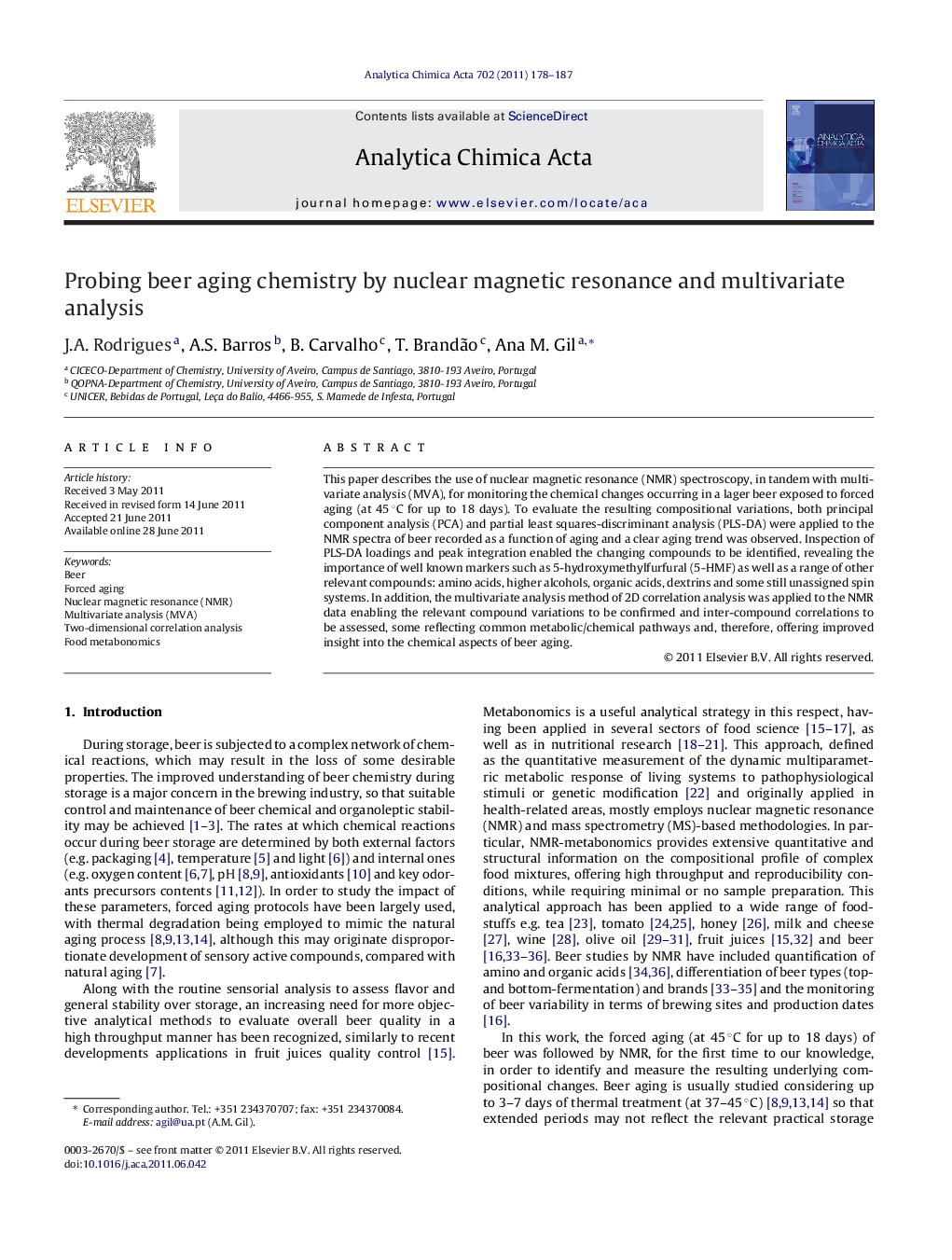| کد مقاله | کد نشریه | سال انتشار | مقاله انگلیسی | نسخه تمام متن |
|---|---|---|---|---|
| 1166820 | 960514 | 2011 | 10 صفحه PDF | دانلود رایگان |

This paper describes the use of nuclear magnetic resonance (NMR) spectroscopy, in tandem with multivariate analysis (MVA), for monitoring the chemical changes occurring in a lager beer exposed to forced aging (at 45 °C for up to 18 days). To evaluate the resulting compositional variations, both principal component analysis (PCA) and partial least squares-discriminant analysis (PLS-DA) were applied to the NMR spectra of beer recorded as a function of aging and a clear aging trend was observed. Inspection of PLS-DA loadings and peak integration enabled the changing compounds to be identified, revealing the importance of well known markers such as 5-hydroxymethylfurfural (5-HMF) as well as a range of other relevant compounds: amino acids, higher alcohols, organic acids, dextrins and some still unassigned spin systems. In addition, the multivariate analysis method of 2D correlation analysis was applied to the NMR data enabling the relevant compound variations to be confirmed and inter-compound correlations to be assessed, some reflecting common metabolic/chemical pathways and, therefore, offering improved insight into the chemical aspects of beer aging.
The use of nuclear magnetic resonance (NMR) metabonomics for monitoring the chemical changes occurring in beer exposed to forced aging (at 45 °C for up to 18 days) is described. Both principal component analysis (PCA) and partial least squares-discriminant analysis (PLS-DA) were applied to the NMR spectra of beer recorded as a function of aging and an aging trend was observed. Inspection of PLS-DA loadings and peak integration revealed the importance of well known markers (e.g. 5-HMF) as well as of other compounds: amino acids, higher alcohols, organic acids, dextrins and some still unassigned spin systems. 2D correlation analysis enabled relevant compound variations to be confirmed and inter-compound correlations to be assessed, thus offering improved insight into the chemical aspects of beer aging.Figure optionsDownload as PowerPoint slideHighlights
• Use of NMR metabonomics for monitoring the chemical changes occurring in beer exposed to forced aging.
• Compositional variations evaluated by principal component analysis and partial least squares-discriminant analysis.
• Results reveal importance of known markers and other compounds: amino and organic acids, higher alcohols, dextrins.
• 2D correlation analysis reveals inter-compound relationships, offering insight into beer aging chemistry.
Journal: Analytica Chimica Acta - Volume 702, Issue 2, 30 September 2011, Pages 178–187